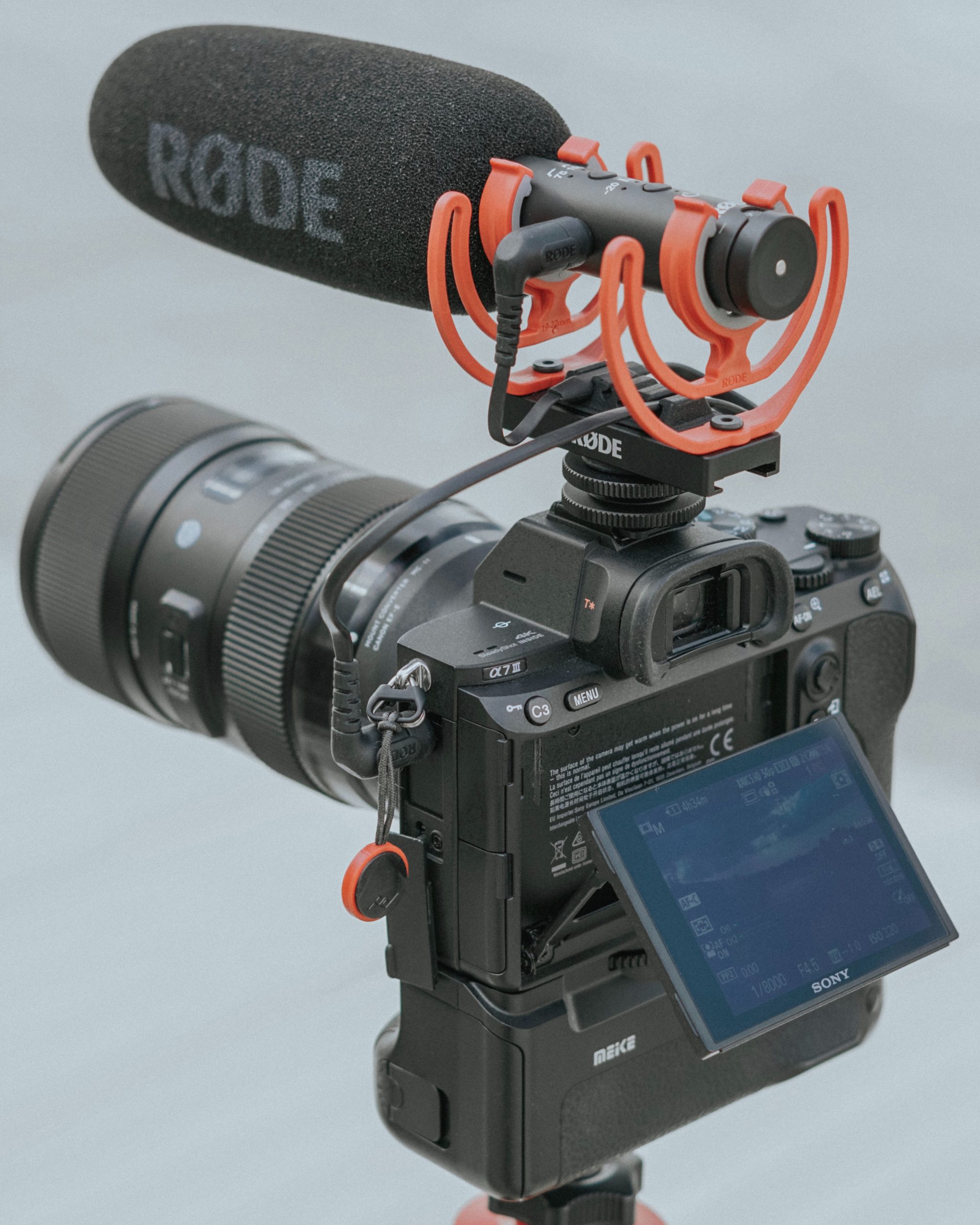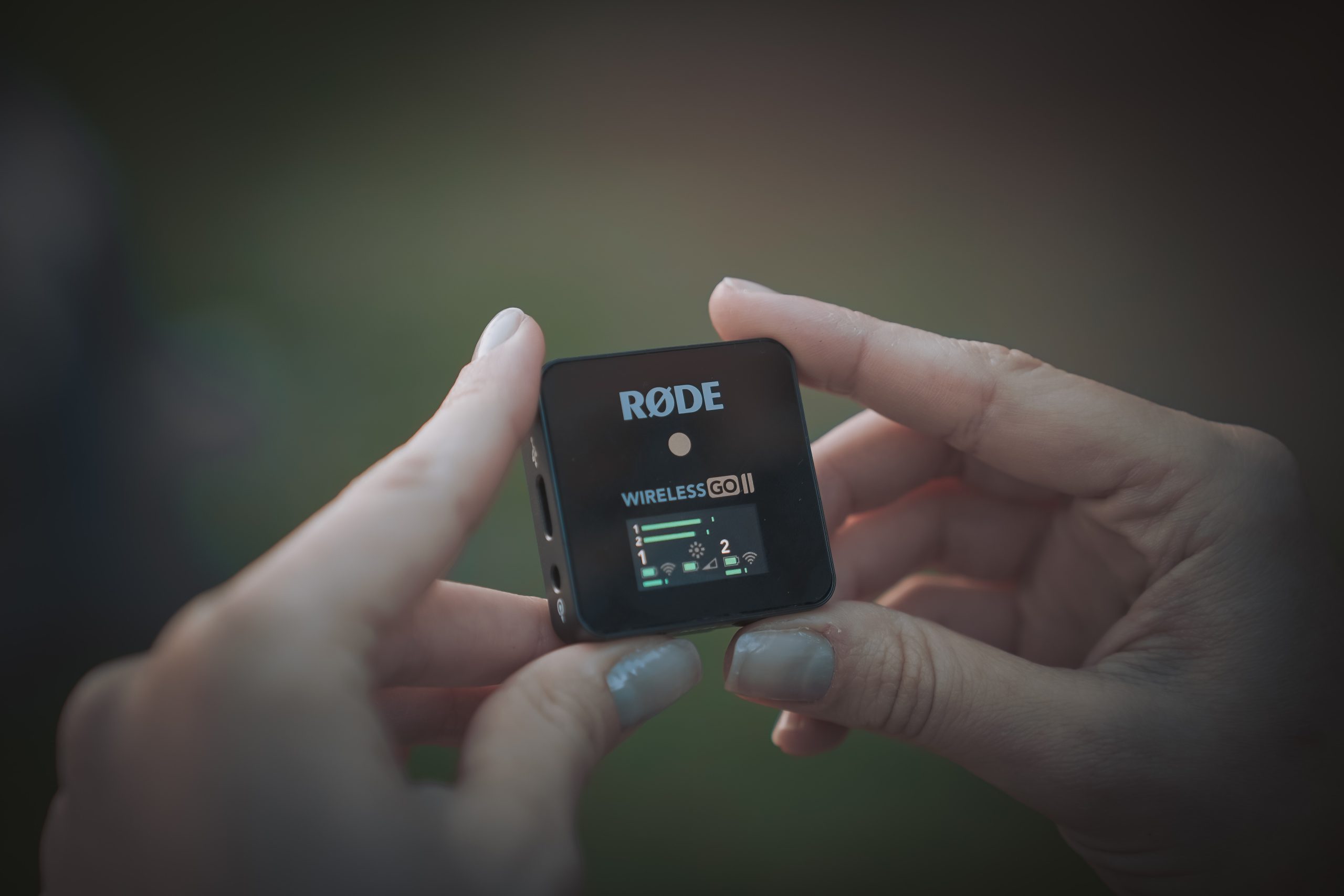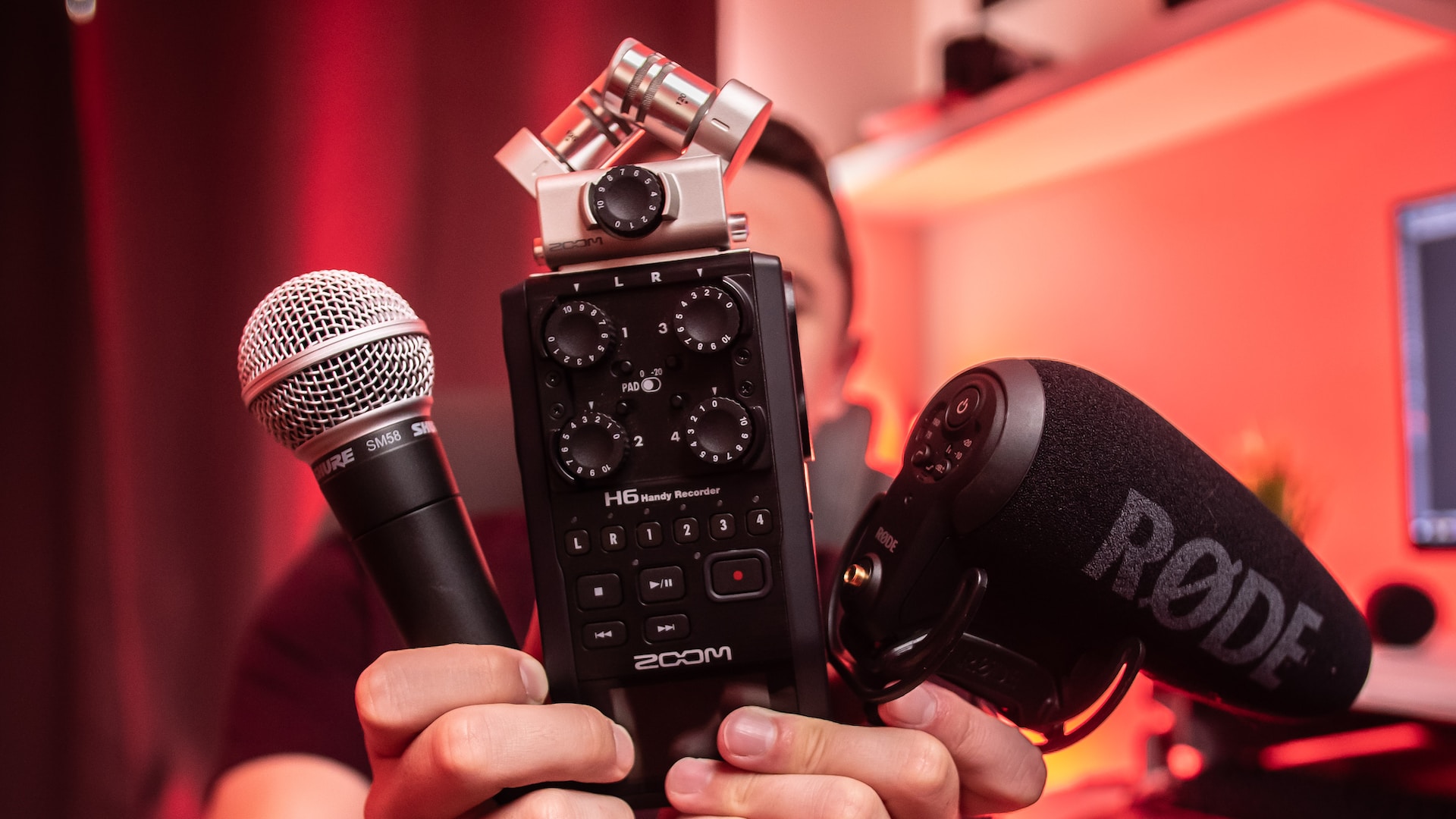Whether you are making a short film, creating a web video, live streaming a show or recording a podcast, if you want to record sound, you need a microphone. Working out how to choose the right microphone for the job can be bewildering; there are so many different makes and models available. Use this guide to help you figure out the right mic for you.
Different Microphone Types
All on board: using the microphone on your camera
If you’re filming or streaming something, then it’s likely your camera has a mic on board. Your smartphone definitely does, as does your laptop or tablet. Most camcorders and DSLRs do too. However, these mics do not usually provide great quality audio capture. Smartphone mics record your voice close-up. If the subject (i.e. you, your performance, your interviewee, etc.) is more than even half a meter away from the microphone, they will sound pretty distant and “roomy”. And capture lots of background noise too.
So if you’re using an on board camera mic, proximity is important. With audio-only recording (for podcasts, internet radio, audio diaries and so on) you have a lot more freedom. So sometimes not having to choose the right microphone might be your best option.
Your own mics
Do you have some mics already? Great, then you may not need to choose the right microphone becasue you could use what you’ve got. Before you do, there are a few things to consider.
Smartphones need a specific type of input: TRRS (tip, ring, ring, sleeve). That’s a minijack plug with three stripes on it. This means it carries a signal for stereo headphone (or speakers) output plus a mono microphone input. You can see this kind of input on headsets for smartphones. You can buy a “trrs microphone and headphone adapter” for under £10. (Search for that term and make sure you buy one with a microphone input, not just a headphone splitter because the latter is no good for recording.)
Decent models include anything from reliable shops such as Studiospares, Gear4Music or Thomann and brands like Kenable and StarTech. For microphones with an XLR connection (like most live and studio vocal and instrument mics) you need something to adapt it to a smartphone signal. We recommend the iRig Pre. It has an XLR input and provides a TRRS output with an option for +48V phantom power; needed for condenser microphones.
Shotgun mics

To go-to of most video recording, especially “run and gun” filmmakers, shotgun mics are highly directional. They pick up what they are pointed at. You can get some very cheap shotgun mics for smartphones and DSLRs but they are probably not very good quality and could be a waste of money. Some of the industry-standard camera brands make pretty good mics, including Nikon, Canon and Sony, but really for shotguns, RØDE and Sennheiser are the cream of the crop. Remember, if your mic has a minijack plug you may need a TRRS adapter and if it has an XLR connection then you need a preamp converter.
Dynamic mics
A good dynamic mic will be your friend forever. They are robust, reliable and used as stage mics for vocals. The industry standard Shure SM58 is hard to beat — literally, they’re solid as a rock — although the likes of AKG and Sennheiser also made decent ones. Use these for close-range, high signal (i.e. loud noise) situations such as speech, vocals and louder instruments (acoustic guitars, brass, woodwind, percussion, etc.). They do not require external power. Dynamic mics can be directional or omnidirectional. Great on stage because they are less prone to causing feedback.
Condenser mics
Subtle, sensitive, used in recording studios and in specific situations on stage, condenser mics can pick up very quiet noises (rustling leaves, brush strokes, the first footsteps of a young ladybird — perhaps not the latter, but you get the idea). Subtle instruments like a piano or harp, suit a condenser mic. They require external power via phantom power or batteries (depending on the mic, recorder or mixing desk). Condenser mics have widely varying field (polar) patterns. They can be problematic on stage (although good sound engineers can certainly work with them) but are great in the studio or the field.
Clip (lavalier) mics

Lavalier mics are for hands-free operation and usually clipped on to clothing. They pick up close-range sounds that are usually used for interviewees and people talking on set or stage. They can be connected via a cable either directly to a mixing desk or recorder, or to a wireless transmitter (TX) device and then picked up by a corresponding receiver (RX) device which is connected to the mixing desk or recorder (which could be an audio recorder, camcorder or smartphone). There are a wide variety of wireless lavalier microphones on the market. Sony and Sennheiser are especially popular, high quality, trusted makes. They are expensive, though.
Contact mics
We’re getting into specialist territory here, usually the reserve of electro acoustic composers or noise artists. Great fun to play with, these simple, often quite cheap, mics pick up noises from the object on to which they are placed or fastened.
Improving sound quality after you choose the right microphone
Pops, shields and jamming with dead cats
Air flow causes unwanted noises for microphones; mostly distortion. Pop filters or shields (round disks with a fine mesh stretched over them — which can be made from a coat-hanger and tights) are placed in front of the mic to reduce the popping sound of Ps and Bs (aspirated plosives). A DIY method is to hold your index finger a few centimeters from your mouth, in front of the mic, to disrupt the airflow. “Wind jammers”, “wind muffs” and “dead cats” are nothing weird, rude or macabre; they are the furry covers for (usually condenser) microphones used outdoors for field recordings, presenters and interviews.
Placement
Where you place your microphone in relation to the source of the noise (i.e. your mouth, your interviewee, your instrument or your activity — be it metalwork, cooking or gardening) makes a big difference to the quality and fidelity of the recording or live sound. You want as much signal as you can get with as little background noise as possible. Experiment with where you put your microphone and use the position that works best.
Booms and stands
You’ve got to hand it to sound recordists; they can really handle a boom pole. Boom mics are synonymous with filmmaking and broadcast. They’re very useful for recording interviews and normally have specific condensers attached to them, such as shotgun mics. Good boom poles withstand and reduce handling noise. Cheaper ones don’t. Mic stands are standard and relatively simple, although they come in all shapes, sizes and varieties (including floor, desk, gooseneck and anglepoise). K&M make especially good ones. Studiospares and Thomann’s own brands are very good too. These tools and techniques really help because when you choose the right microphone, you want to make the most of it.
Choose the Right Microphone
In conclusion, to work out how to choose the right microphone, you need to consider the job in hand. Like many things, when you know what you want to achieve, what your conditions are and what limitations you might have, then you can use the information about to make an informed choice. We’re also very happy to help advise you on the best way to record and capture live sound.
This post was written originally for the XpoNorth blog as part of specialist advice consultancy provided by Inner Ear director, Dougal Perman.

